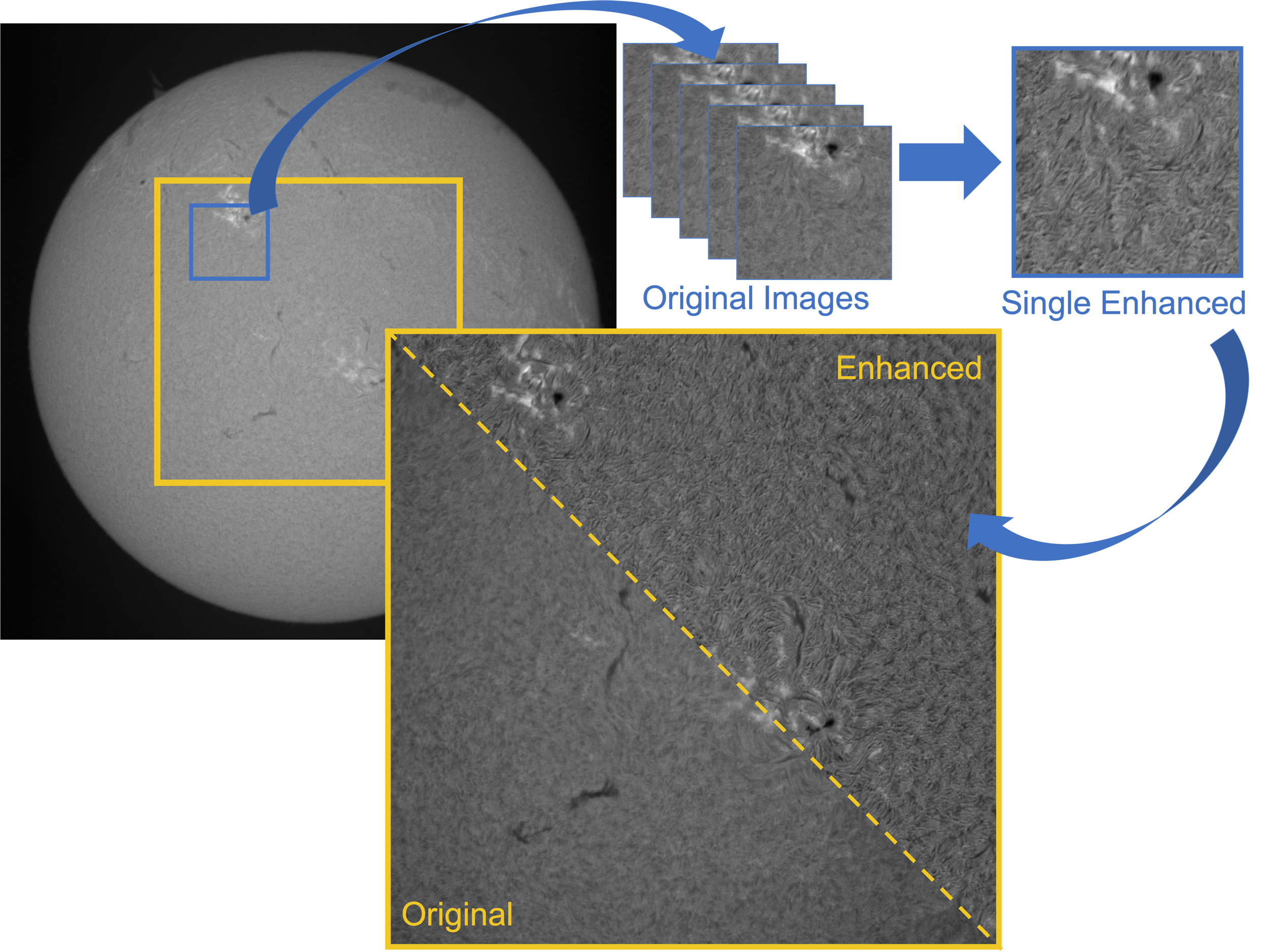How can we use our most recent findings to learn something about the past? New advances in artificial intelligence make it possible to induce our new knowledge directly into previous observations. A post written by Robert Jarolim, University of Graz.

Result of AI image enhancement based on a series of five low-resolution H-alpha observations from full-disc observations taken at Kanzelhöhe Observatory, stacked into a single image. The example shows the enhancement at two different scales indicated by the yellow and the blue box.
With the most recent discoveries in high resolution solar physics, new insights into the complex physical processes happening in our Sun are obtained. While observations are rapidly enhanced with the use of improved instruments in terms of quality and spatial resolution, the variability of the Sun progresses on a much longer time scale. Including past observations into the scientific analysis provides an invaluable source of additional information. In order to compensate for lower image quality, image enhancement techniques are necessary to provide a series of continuous observations with the best quality that can be achieved.
To understand how image enhancement works, we first have to think about the opposite way. If we start with a perfect image, we can add distortions and noise to obtain a low-quality image. The task for image enhancement is to reverse this process, which is difficult because there are multiple ways to obtain a low-quality result from a single high-quality image. From our most recent high-resolution observations we have gained knowledge about the structural appearance of the solar surface and atmosphere, but how can this information be used for the enhancement of single images which are not even co-spatially and co-temporally aligned with the high-quality observations?
Scientists at the University of Graz in collaboration with the Skolkovo Institute of Science and Technology are currently utilizing Artificial Intelligence (AI) to exploit the knowledge obtained from the most recent discoveries to enhance past observations. This is done by a machine learning process where a neural network is first trained to identify the characteristics of high-quality observations. In a second step, low-quality images are enhanced to match the characteristics of the high-quality domain. This method can be used to improve the quality of old data sets, making it similar to modern observations, which allows us to perform studies of long-term variabilities of the Sun.
There is a wide range of applications for enhancing solar images, reaching even back to photographic plates. A recent example is the enhancement of solar H-alpha full-disc observations from Kanzelhöhe Observatory with the use of high-resolution H-alpha images from the Dutch Open Telescope. With the European Solar Telescope, new data of unprecedented quality and spatial resolution will be obtained, which will change our current understanding of the Sun and will also give us new capabilities to interpret past observations.
<< Back
